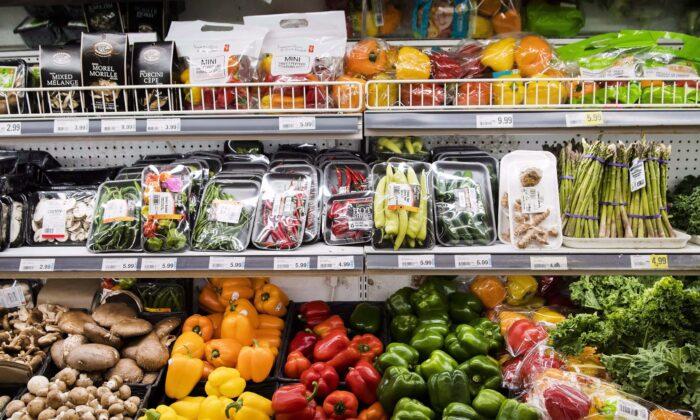If it seems like every grocery trip is costing more and the quantity of food that comes home is getting smaller, that impression might be accurate. The cost of grocery staples is so high that it has increased by more than three or four times the rate of general inflation, according to new data from Statistics Canada.
Meanwhile, Finance Minister Chrystia Freeland said the latest Consumer Price Index report, which is based on the averages of costs for hundreds of goods from food, to shoes, to mortgages, was “good news for Canadians,” according to Blacklock’s Reporter on July 6.
“Inflation in Canada is down to 3.4 percent, the lowest rate in nearly two years,” Ms. Freeland posted on Twitter June 27. “This is good news for Canadians and good news for the Canadian economy!”
The data was released around the same time the government issued a “grocery rebate,” a one-time extra payment to lower-earning households that normally receive the GST credit, at a taxpayer cost of $2.4 billion, according to a May 4 cost estimate by the Parliamentary Budget Office.
Basic items like ground beef have gone from $10.64 per kilogram this time last year, to $11.23 per kilogram this month, a 5 percent increase. For those who like fish, salmon has gone from $26.75 per kilogram in July 2022, to $29.09 per kilogram in July 2023, an 8 percent increase.
Margarine was priced at $6.56 per 907 grams last year at this time, but expect to pay more if buying the product this month, with an almost 14 percent increase to $7.46. Butter has also suffered from inflation, going from $4.97 for a one-pound block in September 2022, to $6.42 per pound in July 2023, a 22 percent increase.
Romaine lettuce has seen a price increase from $2 per head in July 2022, to now $3.54 per head in July 2023, a 77 percent increase.
Olive oil has also seen a jump, from $8.68 per litre last year, to now $11.96 per litre, the highest price in 12 months and a 38 percent increase.
“The data source is scanner data obtained directly from Canadian retailers,” indicated StatsCan, stating the price report is intended to reflect true costs of “items commonly purchased by Canadian consumers,” with price increases reflecting the national averages.
“Transaction data provide a comprehensive electronic record of transactions made through a retailer’s point of sale system and contain relevant pricing information,” said StatsCan.





